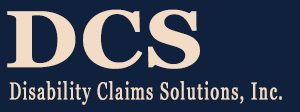 Disability insurance companies have been in business a long time and have learned what works for profitability and what doesn’t. Let’s give them credit for the “learning curve” and resulting strategies that have produced profit time after time, and move on from there. While there are many money making risk management strategies, the top three are: 1) Independent Medical Evaluations, 2) Surveillance, and 3) Doc-to-Doc calls.
Disability insurance companies have been in business a long time and have learned what works for profitability and what doesn’t. Let’s give them credit for the “learning curve” and resulting strategies that have produced profit time after time, and move on from there. While there are many money making risk management strategies, the top three are: 1) Independent Medical Evaluations, 2) Surveillance, and 3) Doc-to-Doc calls.
Let’s use Unum for an example since the company perfected the practice of doc calls many years ago by defining what the dialog with your doctor should be, and how to take advantage of what I call “omissions of error”. While Unum seems to be the best at implementing the doc-to-doc strategy, the company is by no means the only insurer who engages in the practice.
There are many reasons why insurance companies make calls to treating physicians:
- Intimidation into agreeing with the insurer’s point of view that the patient can work by getting the treating physician to release the patient.
- Obtaining treating physician buy-in of an illusionary “consensus of medical opinion” so that the insurer doesn’t look like the initiator or manipulator of facts in order to document a denial.
- Interjecting new misrepresentations of medical information to your doctors making them appear inept, unknowledgeable, and wrong in scope, treatment and diagnosis.
- Providing a fax follow-up misrepresenting what was said during the conversation, taking advantage of your doctor’s busy practice by saying, “If we don’t hear from you by a certain date, we will assume you agree with this summary.” If your physicians does not respond to correct the inaccuracies, insurers will use their own “words put into your doctor’s mouths” as fact and act accordingly.
Today, many physicians refuse to accept phone calls from insurance doctors since communicating medical information electronically (HIPAA) could be violated without the patient’s permission. There are also physicians who brazenly accept these calls and literally throw their patients, and their claims, under the box car tracks. Other physicians do not take the time to correct the faxes containing inaccuracies about conversations and again, patients lose claims because of it.
DCS, Inc. has always taken exception to a treating physician who has been told by a patient NOT to communicate on the phone to an insurer but does so anyway. These physicians seem to think themselves gods by making decisions to communicate when in fact they are in violation of HIPAA if the patient refuses to give permission.
The worst possible outcome of a doc-to-doc call is one that is answered by a nurse manager, or office RN, who tells the insurance company the patient can go back to work without ever checking the patient’s record. Nurse managers have also been known to fill out paperwork returning patients to work when in fact the doctor considers them totally disabled. These types of errors are not redeemable and the insurance company will never again consider the physician credible.
Again, let’s not underestimate the deceptiveness of insurance physicians who speak to treating physician when they are able to get through. These are the occasions when Unum’s docs (and other insurance doctors) seem to shine with deceptiveness to “do more harm than good.”
All insureds should speak to their physicians and decide how to handle calls from insurers so that there is no misunderstanding when it happens. I understand that most doctors today refuse the calls anyway, but here and there I keep hearing insurance docs get through and claims are denied as a result.
DCS clients already know how we handle doc-to-doc calls, but if you have questions please give me a call. Non-clients should immediately speak with treating physicians about how to handle them when they occur.
